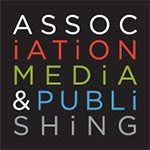
Convene's June cover story, "Generation Y Speaks," looks at the experiences and expectations of Millennials in the meetings industry, from a perspective that really shouldn't be as rare as it is: Gen Y's own point of view. (The author, senior editor Hunter Slaton, is himself a member of Gen Y.) The story reframes the conversation -- always a great way to bring fresh thinking to bear on a topic.
In the same issue, regular columnist Dave Lutz does a little reframing of his own, offering a list of ways that organizers could make conferences more Gen Y-friendly.
I was struck while reading Dave's list -- and a similar list he posted elsewhere -- that many of the things that would make Gen Y happy would make us all a little happier with the meetings we attend.
Here are three simple reasons, borrowed from Lutz, why we in the meetings industry should probably thank the nearest Millennial:
1. Millennials expect and demand access to free Wi-Fi. Most meeting attendees, even if they are not checking in on Foursquare, want to stay connected to their smart phones and laptops. At a recent conference I attended, I had to physically travel a couple of times a day to a spot where I could log on. It changed how I spent my time at the conference -- and not in a good way. I've come to feel entitled to access to free Wi-Fi, too.
2. Millennials are foodies. Forty percent, according to Lutz. And three cheers for that. Enjoying food and cooking are not limited to Gen Y, of course, but my experience is that Millennials are masters at making the connection between good food and living well. Have you ever been on a picnic with a Millennial? They don't pack lunch so much as curate it.) Trying to cater to the Millennial palate would likely mean better F&B experiences for everybody.
3. Millennials want to do cool things. They want to have experiences, not things, Lutz writes. That desire dovetails perfectly with brain research that emphasizes the role of experience and exploration in learning. We are hard-wired to be curious, and the most successful learning environments are those that allow us to interactive, according to molecular biologist John Medina. (For more from Medina, see the upcoming July issue.)
So if Millennials get what they want, we'll have more technologically seamless meetings, with great food, and richer, more valuable learning experiences.
Sounds pretty good to me.

















